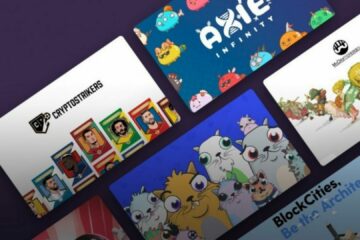The idea of social tokens is not new, but the way the NFTs are being used in communities has changed. The token economy as it’s now called, is a system that rewards users for contributing to online communities with virtual currency. These currencies can be exchanged for things like increased visibility on forums or increased numbers of followers on social media sites such as Twitter and Facebook.
How does NFTs affect the community?
NFTs (non-fungible tokens) are a new kind of virtual asset that is unique, unlike any other token on the blockchain. They can be used to represent anything from digital artwork, to loyalty points, to game items. NFTs are created when a user “colors” an existing ERC20 token with additional data that makes it unique. This could be as simple as adding the name of the owner, or as complex as coding in specific rules about how the token can be used.
The possibilities for NFTs are endless, and this is what makes them so exciting for social communities. Because they are so versatile, they can be used to represent just about anything imaginable. For example, an artist could create a token that represents their digital artwork and sell it to users who would be able to prove they own the art because of its link to the unique token. This is different from selling tokens representing shares in a company or rights to profits, which can only represent one thing: ownership.
NFTs sound great, but what’s stopping them from being used?
The potential for NFTs in social communities is clear. However, there are some issues that still need to be addressed before this becomes a reality. Firstly, the process of creating unique assets on blockchains is complex and not well-understood yet. In addition, many current projects use proxies instead of actual ERC20 tokens as a way to create unique assets. This means that a user would be buying a representation of the unique asset, rather than the actual token itself.
While NFTs are still in their early days, it’s clear they have bright future ahead of them and will likely change how communities work online. In time, we may see this technology used for things like digital collectibles and artwork, which could lead to a whole new economy being born on blockchains. On the other hand, some people foresee problems with NFT markets being dominated by large companies or influencers that have sizeable audiences.
What do we think about social tokens?
The idea of social tokens is not new, but the way they are being used in communities has changed. The token economy as it’s now called, is a system that rewards users for contributing to online communities with virtual currency. These currencies can be exchanged for things like increased visibility on forums or increased numbers of followers on social media sites such as Twitter and Facebook.
As is often the case with blockchain technology, this idea isn’t entirely new. Websites like SteemIt.com have been operating on a similar token system for years now, but there are some differences between these tokens and what are being proposed by NFT projects. The most important difference here is that many of the websites using the token model allow users to store their tokens on their own computers instead of in an online account or wallet which can then be transferred to other users on the platform. This allows them to use all the features on websites without ever needing to deposit any assets into third party servers.
These changes might not seem significant at first glance, but they do present some advantages over systems. For one thing, they avoid the need for a central authority to keep track of all the transactions and holdings. This is important because it means that users can be more confident that their tokens will remain with them even if the website or company running the system goes out of business. It also allows users to trade or give away their tokens in any way they see fit without needing to go through a third party.
The future of NFT community
This new model has already begun to take off, with a number of projects starting up in the past year or so. One of the most well known of these projects is called Decentraland. Decentraland is a virtual world that allows users to create and share experiences with each other using NFTs. In Decentraland, everything is owned by the community. Instead of buying virtual land from a central authority, parcels are created through interactions between users. This creates a more dynamic environment where the experiences are user generated instead of being controlled by a small number of company employees or other individuals.
As promising as this may seem, there are also some drawbacks to using non-fungible tokens for this purpose. For one thing, it can be difficult to verify who owns which NFTs. Because each token is unique and associated with only one online account or wallet, there’s no way to use public information to determine who has what NFTs without asking each person individually. This means that the trust model isn’t linear – every single user must be trusted not to lie about their holdings. This can be a difficult thing to manage, especially for online communities that are still growing in size.
Another potential issue is that non-fungible tokens may not be as widely accepted as traditional forms of currency. For example, it might be difficult to use NFTs to purchase goods or services from vendors who are not familiar with the technology. This could limit the usefulness of NFTs in some cases and make it more difficult for them to gain widespread adoption.
Despite these drawbacks, there is no doubt that non-fungible tokens are a powerful tool for creating social communities online. Their unique properties allow for a more democratic and transparent form governance that can help to prevent centralization and promote user creativity. While there are some challenges that need to be overcome, it is clear that NFTs have the potential to revolutionize online social interaction.



0 Comments